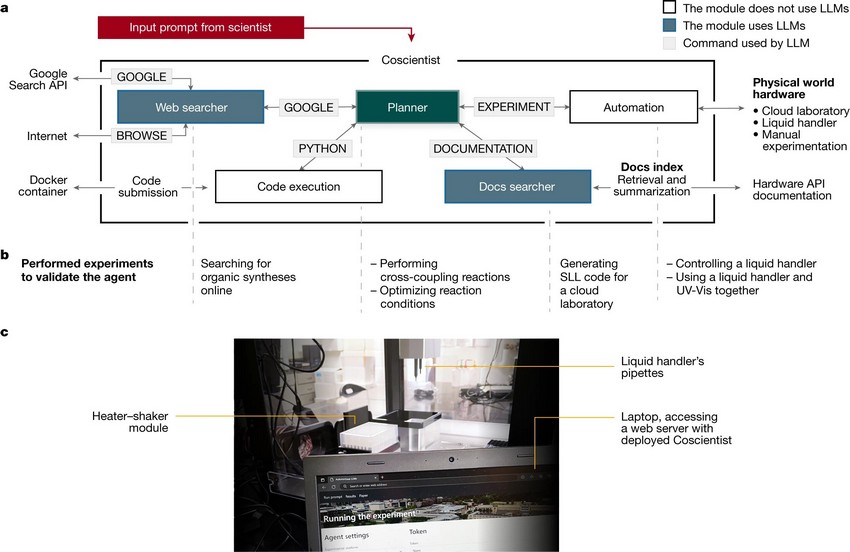
In a groundbreaking leap for artificial intelligence, the team at Carnegie Mellon University, Pittsburgh, has unveiled “Coscientist” – an AI lab partner capable of autonomously planning and executing real-world chemistry experiments. The innovative AI-driven system demonstrated its skill by swiftly learning and successfully reproducing chemical reactions in a matter of minutes.
Coscientist’s achievements extend to orchestrating complex palladium-catalyzed cross couplings, recognized with the 2010 Nobel Prize in Chemistry. The team, led by chemist and chemical engineer Gabe Gomes, emphasizes that this is the first instance of a non-organic intelligence autonomously executing such intricate human-invented reactions.
Large language models, notably GPT-4, constitute the cognitive core of Coscientist. The team conducted meticulous tests, including the utilization of diverse software modules and AI frameworks, showcasing its capability to understand, plan, and execute sophisticated laboratory tasks.

Fig. 1: The system’s architecture
Coscientist exhibited remarkable chemical reasoning, relying on publicly available chemical information in the simplified molecular-input line-entry system (SMILES) format. It dynamically adapted its experimental plans based on specific molecular details, a feat described by team researcher Daniil Boiko as the epitome of chemical reasoning.
Notably, the AI demonstrated proficiency in accessing and utilizing technical documents, translating theoretical plans into executable code for robotic laboratory equipment. This functionality positions Coscientist as a versatile tool for translating theoretical research into practical experiments.
In a symbolic final exam, Coscientist was tasked with executing Suzuki and Sonogashira reactions, pivotal in pharmaceutical and semiconductor development. Despite never attempting these reactions before, Coscientist efficiently sought information from various sources, including Wikipedia, and swiftly formulated precise procedures.
The system’s ability to self-correct during the physical execution of experiments was particularly noteworthy. It quickly identified an error in the code controlling a heating and shaking device, corrected it by referring back to the technical manual, and successfully completed the experiments.
Gabe Gomes, astonished by Coscientist’s capabilities, acknowledges the transformative potential of AI in scientific discovery. However, he underscores the importance of responsible AI use, emphasizing the need for informed rules and policies to prevent misuse.
The implications of Coscientist’s success extend beyond chemistry. Gomes envisions AI-assisted systems like Coscientist bridging the gap between the vastness of unexplored natural phenomena and the scarcity of trained scientists. He emphasizes the potential for AI to democratize resources, making scientific exploration more accessible across various disciplines.
The advent of AI-assisted scientific discovery, epitomized by Coscientist, promises to accelerate the iterative process of experimentation and learning. By automating and enhancing scientific endeavors, AI holds the potential to revolutionize how we explore and understand the intricacies of the natural world.